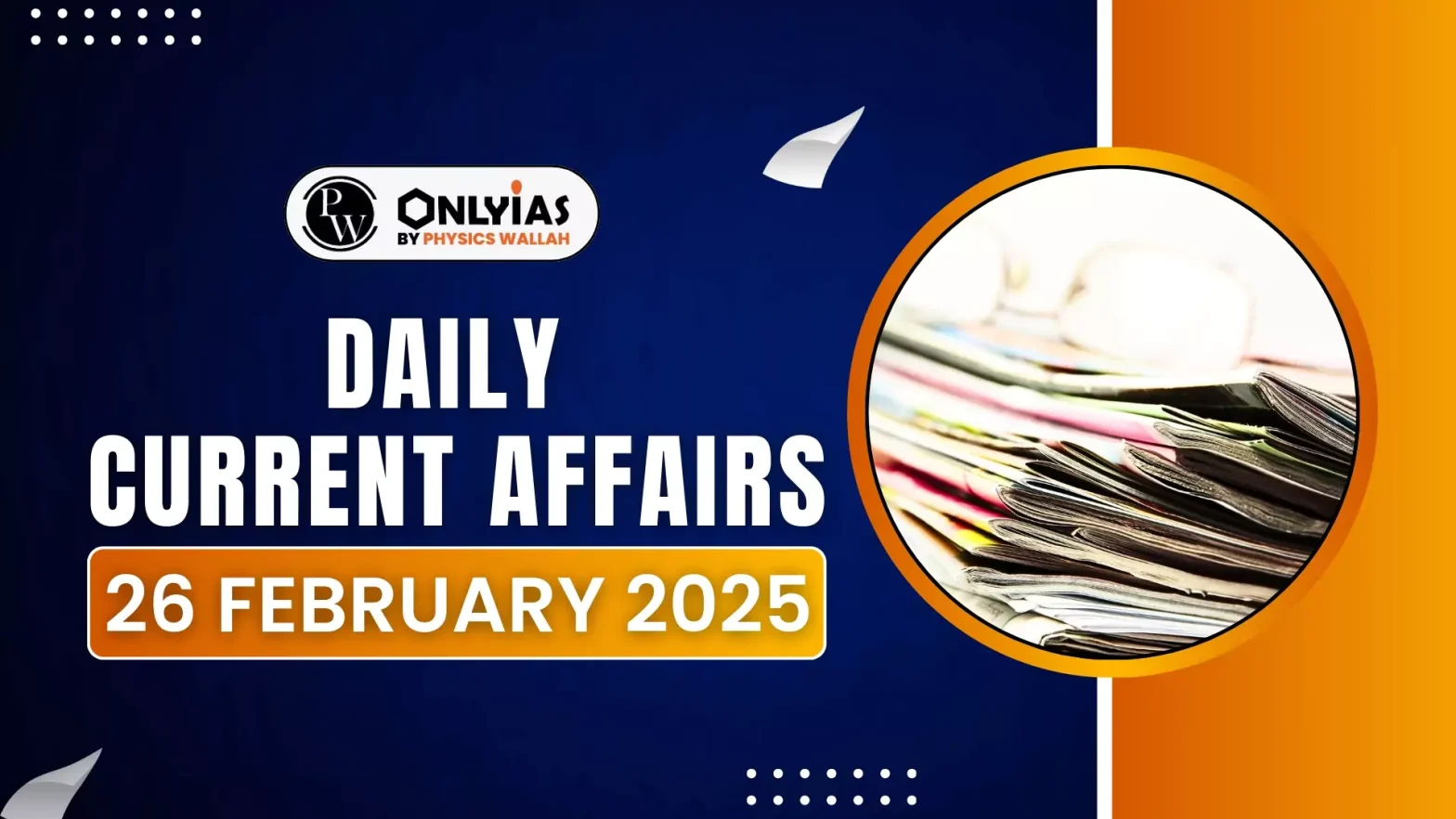Tamil Nadu is opposing the Centre’s three-language policy under National Education Policy of India (NEP) 2020, rejecting it as Hindi imposition.
Background
- Withholding of Funds: The Union Government has withheld ₹2,152 crore in funds due to Tamil Nadu under the Samagra Shiksha scheme for refusing to join the Prime Minister Schools for Rising India (PM SHRI) initiative.
Tamil Nadu’s 2-Language Policy:
- Tamil Nadu’s Two-Language Policy, adopted in 1968, mandates Tamil and English in Government schools.
- Since then, the state has been following a two-language policy, with Hindi being taught only in CBSE schools.
|
- Tamil Nadu’s Stance: Tamil Nadu is eager to participate in the PM SHRI scheme.
- However, it staunchly opposes the accompanying mandate to implement the National Education Policy (NEP) 2020.
- Though the NEP says the third language could be any Indian language, the state sees it as a ploy to impose Hindi through the back door.
- It insists on continuing its longstanding two-language policy.
About Samagra Shiksha Scheme
- Samagra Shiksha is a centrally sponsored scheme launched in 2018 to provide holistic school education from pre-school to Class XII.
- Funding Pattern
- 90:10 (for North-Eastern States and Himalayan States).
- 60:40 (for other States)
- 100% Central funding for Union Territories without Legislature.
About PM SHRI Scheme
- PM Schools for Rising India (PM SHRI) is a centrally sponsored scheme by the Government of India.
- Objective: Development of 14,500+ schools by strengthening selected existing schools managed by the Central Government, State/UT Governments, and local bodies.
|
About Three Language Policy
- Introduction: The three-language formula is an education framework that was first introduced in the National Education Policy (NEP) of 1968.
- It mandated the teaching of Hindi in non-Hindi speaking states, alongside English and a regional language.
- Three-language formula given by the Kothari Commission(1964–66):
- First language: It will be the mother tongue or regional language.
- Second language: In Hindi speaking states, it will be other modern Indian languages or English.
- In non-Hindi speaking states, it will be Hindi or English.
- Third Language: In Hindi speaking states, it will be English or a modern Indian language.
- In the non-Hindi speaking state, it will be English or a modern Indian language.
- NEP 2020 Revision: The NEP 2020 retains the three-language formula but with flexibility.
- States, regions, and students can choose the languages, provided at least two are native to India.
- No language is imposed on any state.
- NEP advocates learning of Sanskrit.
Constitutional Provisions on Language
- Official Language: Article 343 Official Language of the Indian Union
- Clause: (1) The official language of the union shall be Hindi in Devanagari script.
- Clause: (2) for a period of fifteen years from the commencement of this Constitution, English language shall continue to be used for all official purposes of Union for which it was being used
- The Constitution does not specify the official language of different states.
- State Autonomy under Article 345: States have the authority to adopt one or more languages for official purposes, including Hindi or regional languages.
- Promotion of Hindi: The Constitution mandates the Union to promote Hindi as a medium of expression for India’s composite culture under Article 351 of the Indian Constitution.
|
Language Politics in Implementation of Three Language Policy
- Resistance in Non-Hindi States
- Tamil Nadu’s Opposition: The state has historically opposed Hindi imposition, tracing back to the Anti-Hindi Agitations (1937, 1965). The state follows a two-language policy (Tamil and English) instead.
- States like Karnataka and West Bengal have also shown reluctance to enforce Hindi as a mandatory language.
- Perceived Hindi Imposition
- Critics argue that the policy promotes Hindi by the Centre.
- North-South Divide
- In North India, Hindi is the predominant language, but in South India, regional languages like Tamil, Telugu, Malayalam and Kannada hold stronger ground.
- The South perceives the policy as favoring Hindi-speakers, while many in the North do not feel the need to learn a South Indian language.
- Role of English
- English remains a neutral link language, widely used for education, governance, and commerce in many states.
Significance of Implementing Three Language Formula
- National Integration: The three-language policy bridges linguistic divides by encouraging communication across states, fostering unity and understanding among India’s diverse linguistic groups.
- Preservation of Linguistic Diversity: By mandating the inclusion of regional languages, the policy protects and promotes India’s rich linguistic heritage, ensuring that local languages remain relevant in education and culture.
- Enhanced Cognitive Skills: Learning multiple languages improves cognitive abilities such as problem-solving, creativity, and memory, while also providing academic flexibility.
- Economic Advantages: Multilingualism increases employability in both national and international job markets and supports labor migration by enabling workers to communicate effectively across states.
Challenges in Implementing a Third Language in Schools
- Poor Learning Outcomes:
- The Annual Status of Education Report (ASER) 2022 revealed that 60% of Class V students cannot read a Class II-level text.
- The 2023 report highlighted that 25% of youth aged 14-18 cannot read fluently in their regional language, and over 40% struggle with English sentences.
- Resource Constraints:
- Government schools face a shortage of qualified teachers and infrastructure to effectively teach additional languages.
- Even private schools, which teach a third language until Class VIII, report limited student proficiency.
- Financial Burden: States bear 85% of the expenditure on elementary education, while the Centre contributes only 15%.
- Total education expenditure remains at 4-4.5% of GDP, far below the NEP 2020 target of 6%.
- Perceived Imposition of Hindi: In non-Hindi speaking states, particularly in South India, the formula is often viewed as a tool for imposing Hindi, leading to resistance and political backlash.
- Federalism and State Autonomy: The formula has sparked debates about the balance of power between the Centre and states.
- States like Tamil Nadu have consistently rejected the three-language policy, asserting their right to determine their own language policies.
- Cultural Identity: The formula’s attempt to standardize language education is often seen as a threat to regional cultures.
Way Forward
- Focus on Foundational Skills: Government schools should prioritize improving proficiency in the mother tongue/local language and English, alongside foundational numeracy skills.
- Flexibility and Autonomy for States: Given India’s linguistic diversity, states should have greater autonomy in deciding language policies for schools.
- Constructive Dialogue: A constructive dialogue between the Centre and Tamil Nadu is essential to resolve funding disputes and policy disagreements.
- Promoting Multilingualism Naturally: Census data of 2011 shows that 26% of Indians are bilingual, and 7% are trilingual, with higher rates in urban areas.
- Rapid urbanisation and labor migration are likely to increase multilingualism organically, reducing the need for compulsory language policies.
- Global Competitiveness: Proficiency in English has been a key driver of India’s success in global service industries.
-
- While learning additional Indian languages is desirable, it should not come at the cost of English or regional language proficiency.
Key Highlights Of National Education Policy (NEP) 2020:
- Objective: NEP 2020 aims to transform education by focusing on flexibility, holistic development, skill-based learning, and multilingualism in schools.
- School Structure (5+3+3+4):
- Foundational Stage: 5 years (Preschool to Grade 2)
- Preparatory Stage: 3 years (Grades 3 to 5)
- Middle Stage: 3 years (Grades 6 to 8)
- Secondary Stage: 4 years (Grades 9 to 12)
- Four Pillars of NEP:
- Access: Ensuring education for all.
- Equity: Bridging gaps in educational opportunities.
- Quality: Focusing on better learning outcomes.
- Affordability: Making education cost-effective and inclusive.
- Three-Language Formula:
- Students must learn three languages, with at least two being Indian.
- States have flexibility in language selection.
- Mother Tongue-Based Education:
-
- Encourages early schooling in home languages for improved comprehension and cognitive growth.
|
Additional Links: PM SHRI Schools (PM Schools For Rising India) Scheme – PWOnlyIAS
![]() 26 Feb 2025
26 Feb 2025

